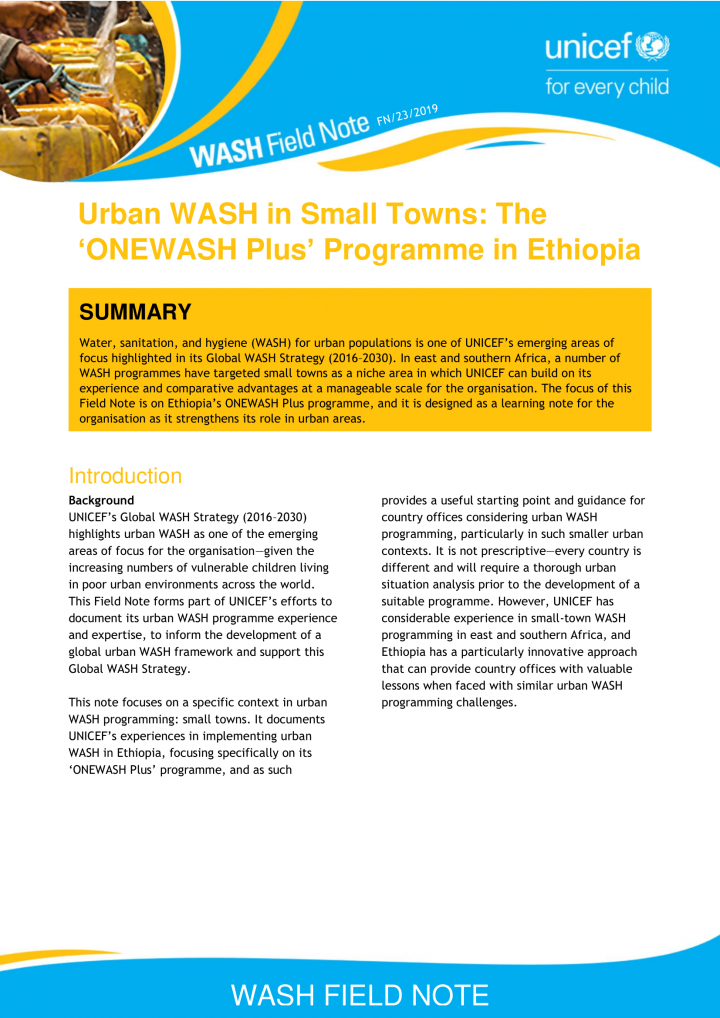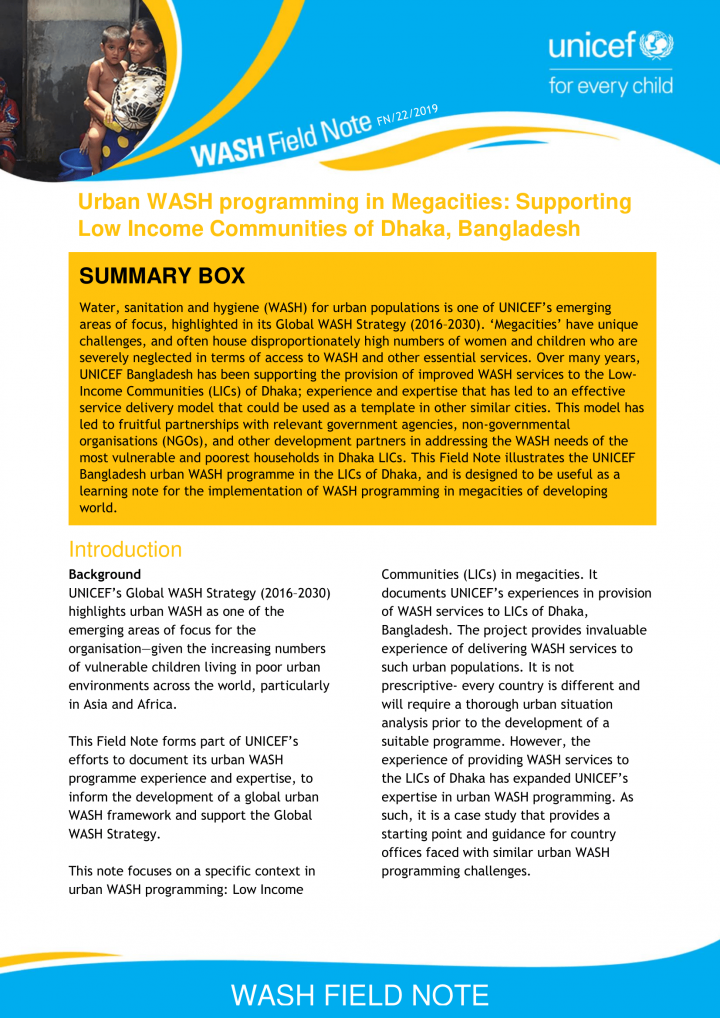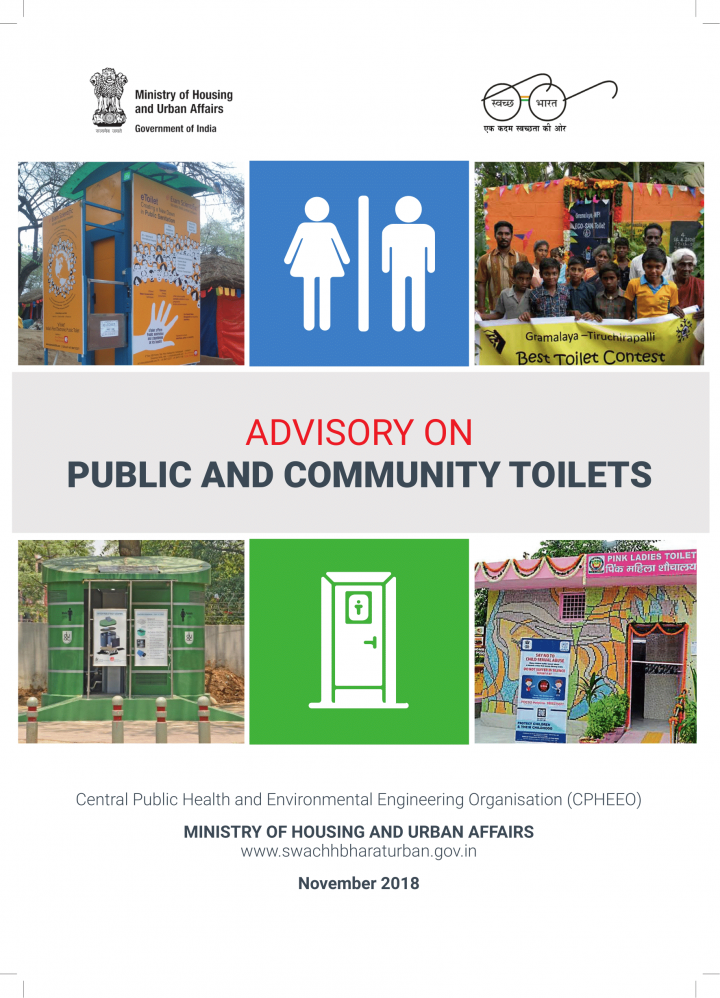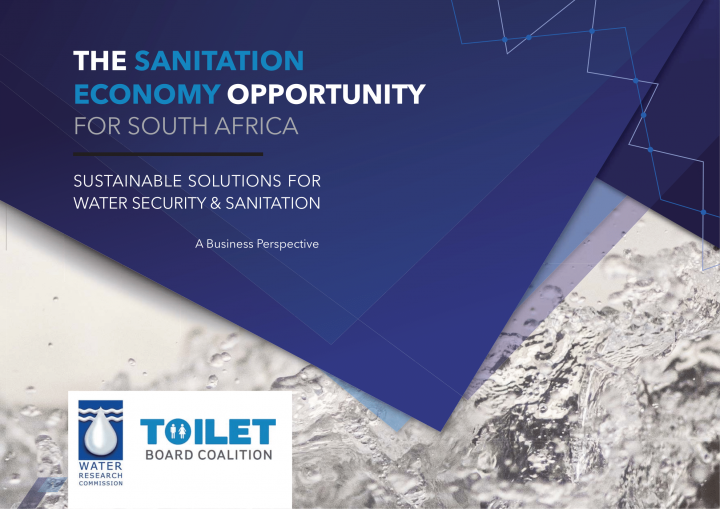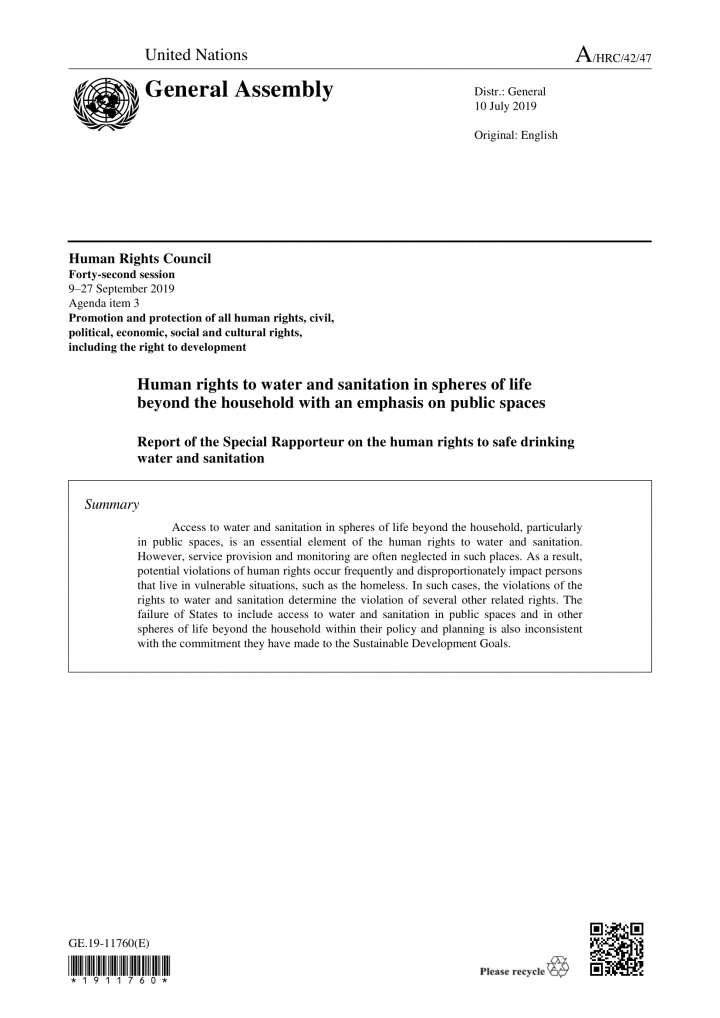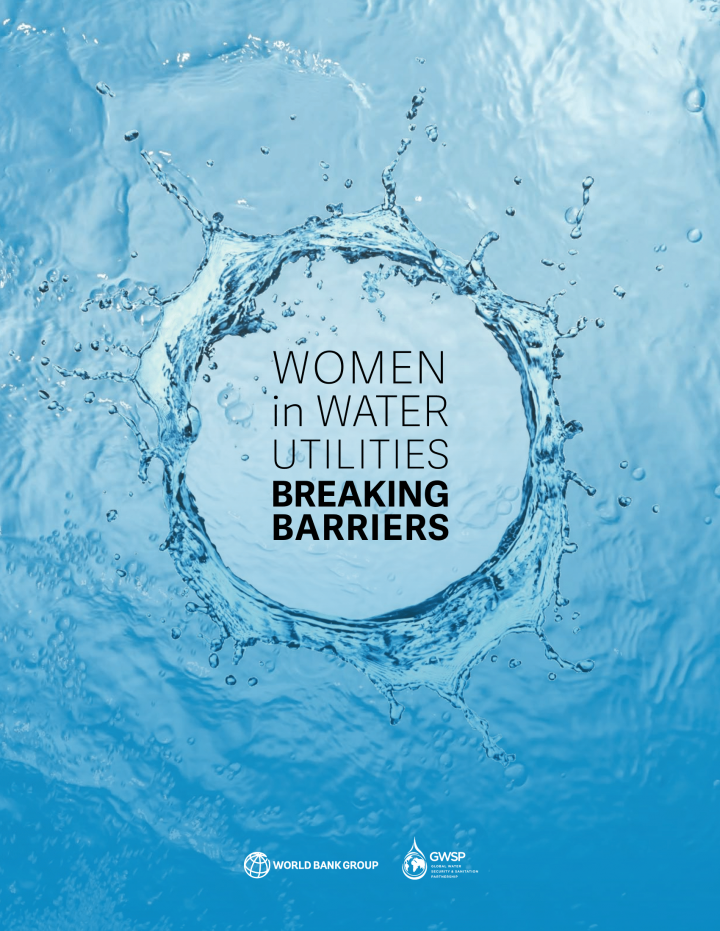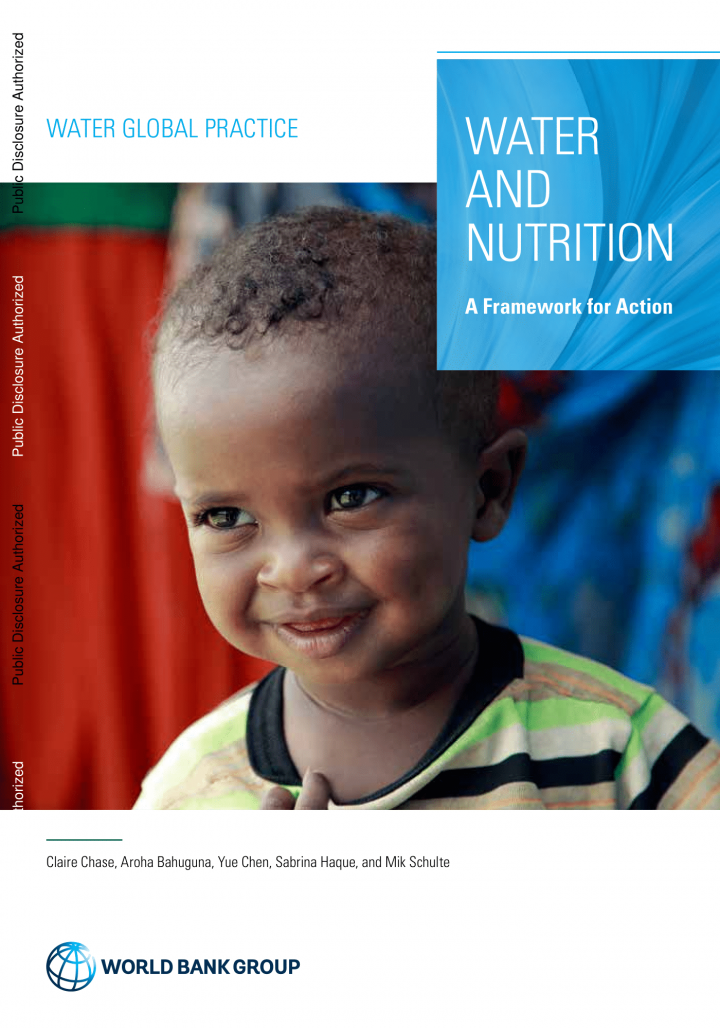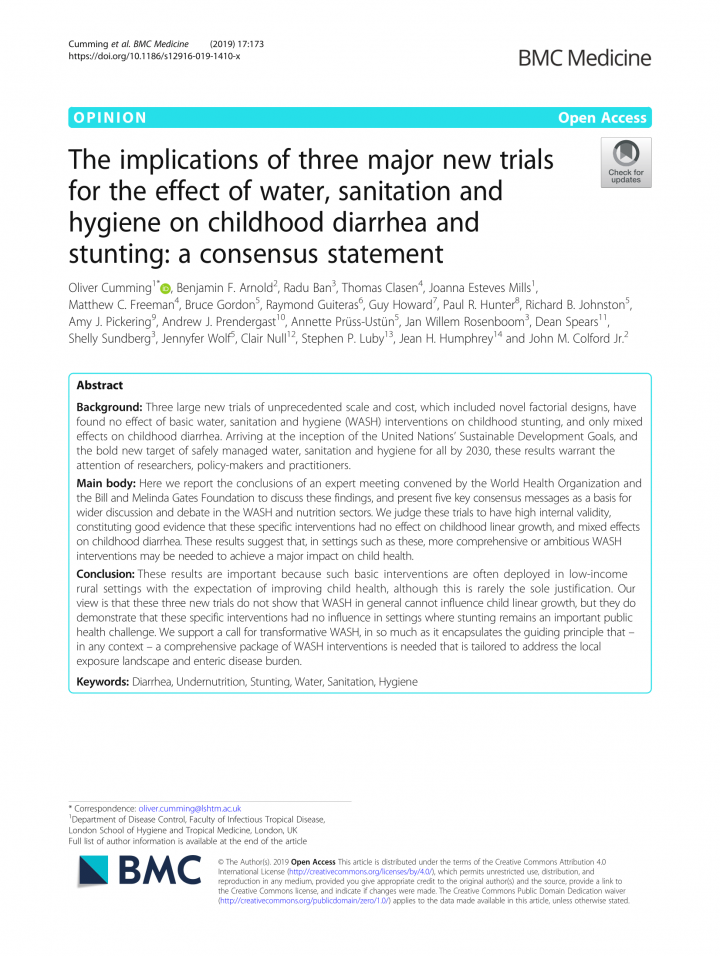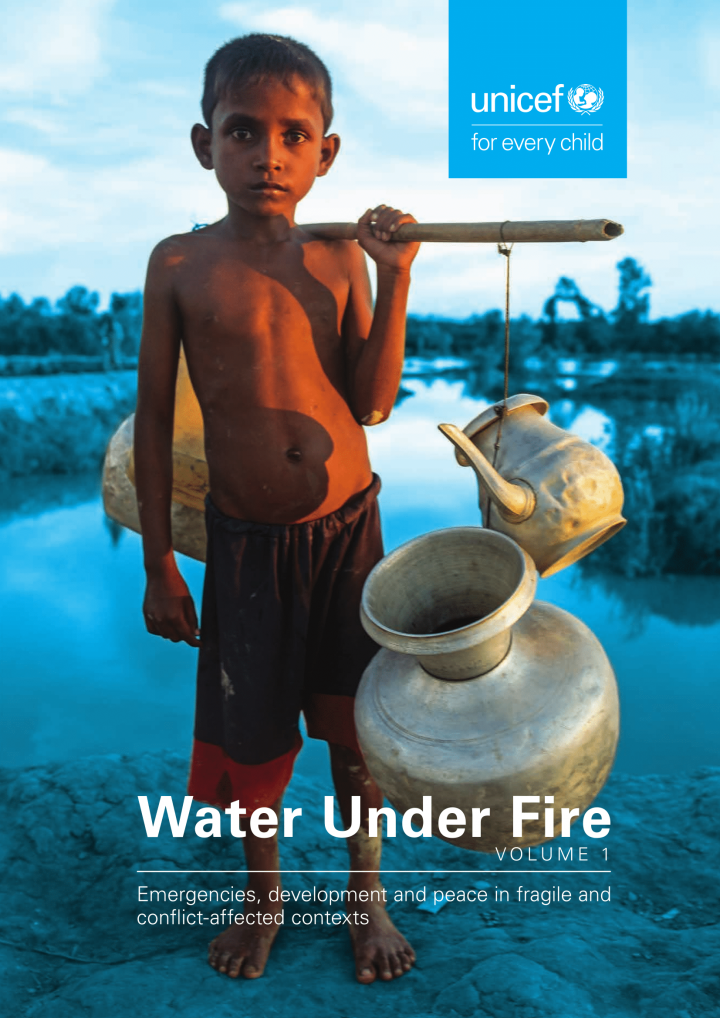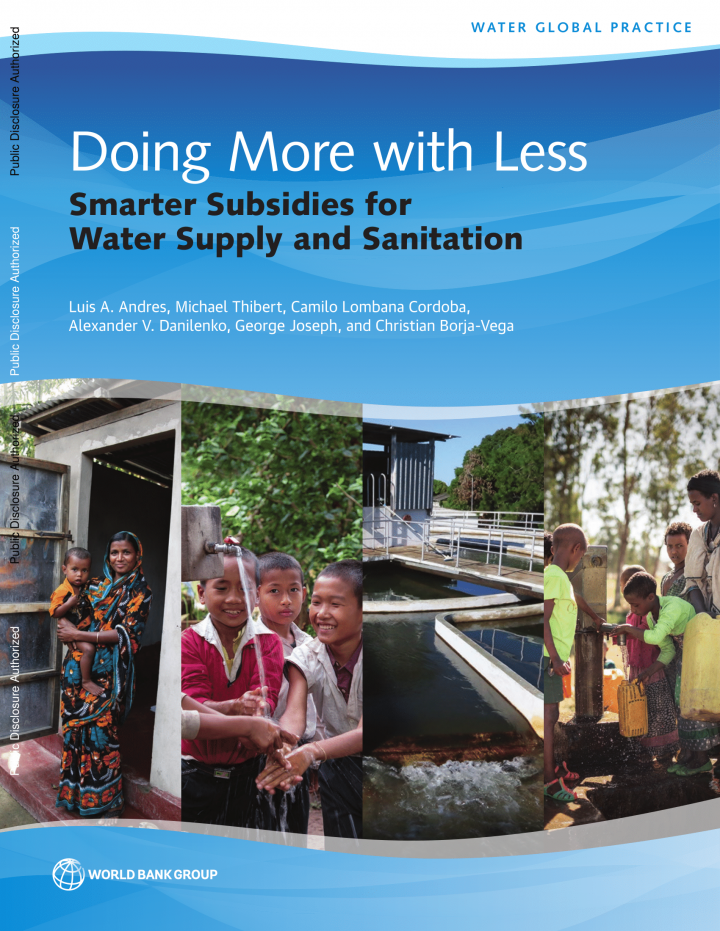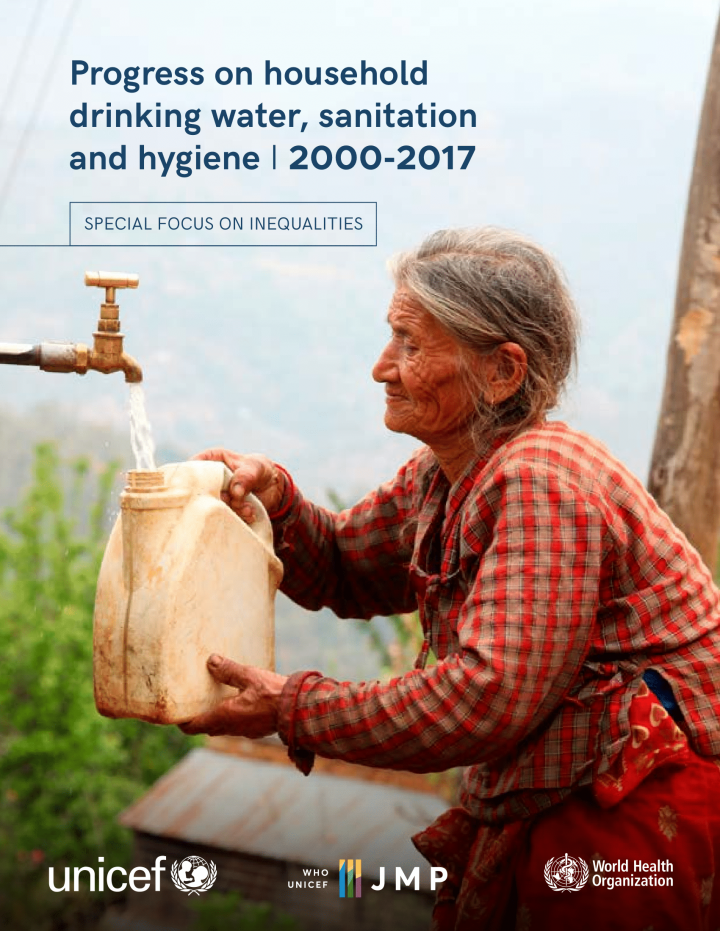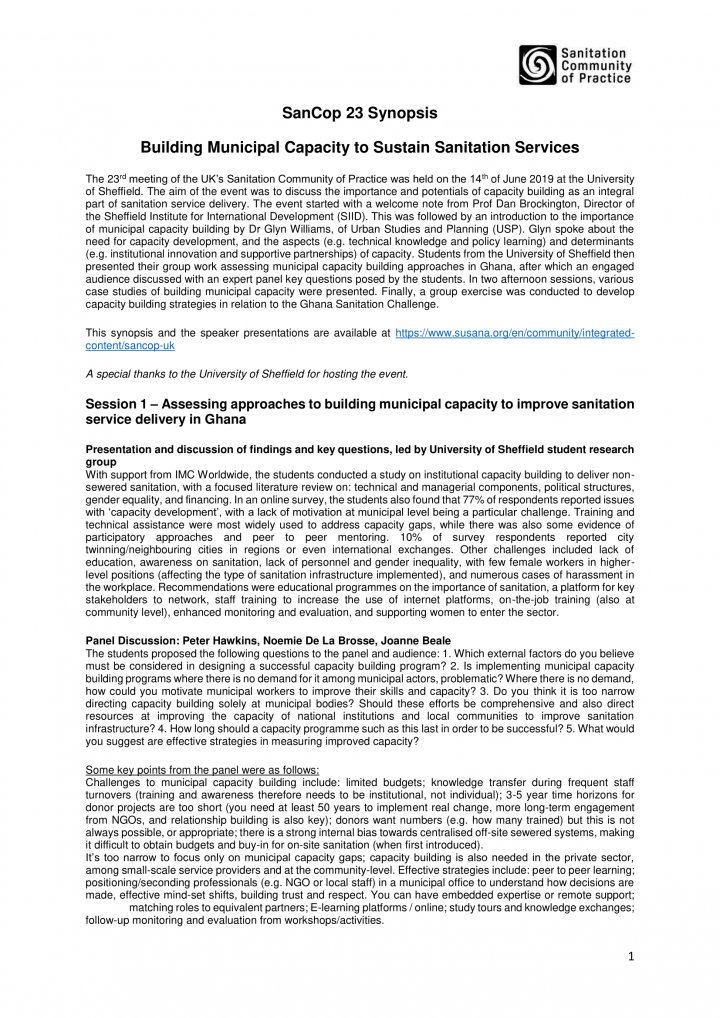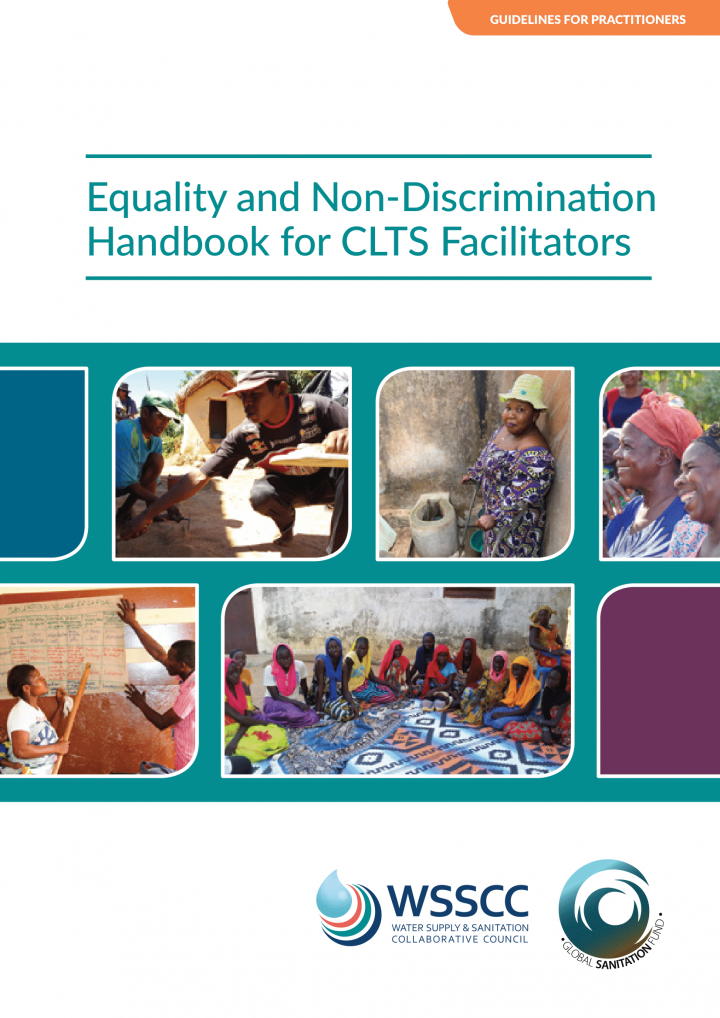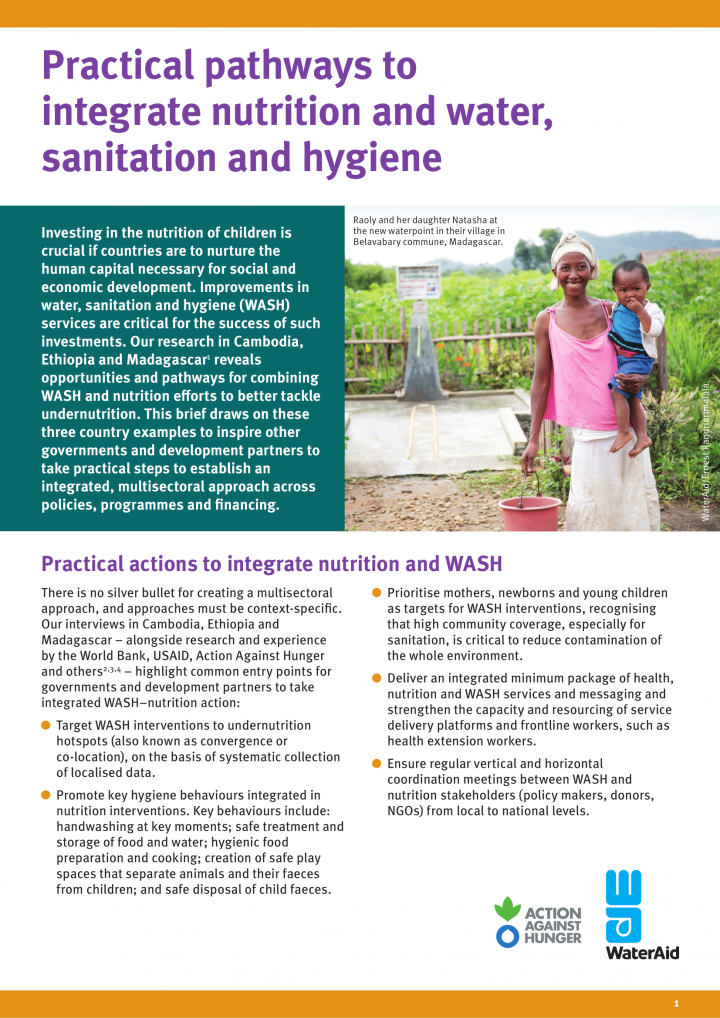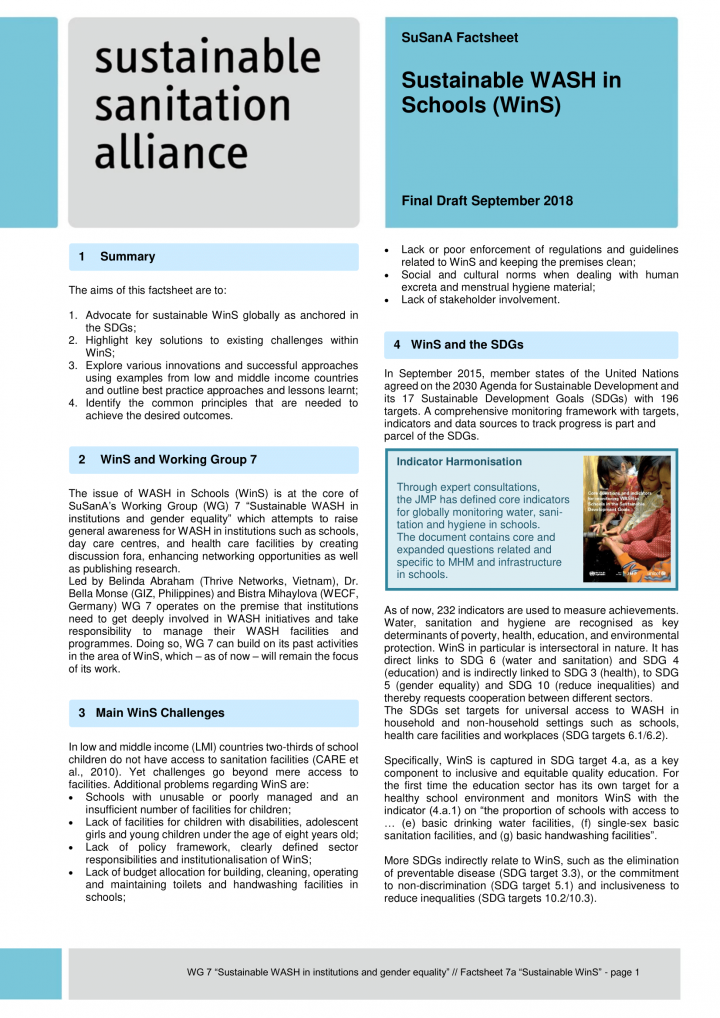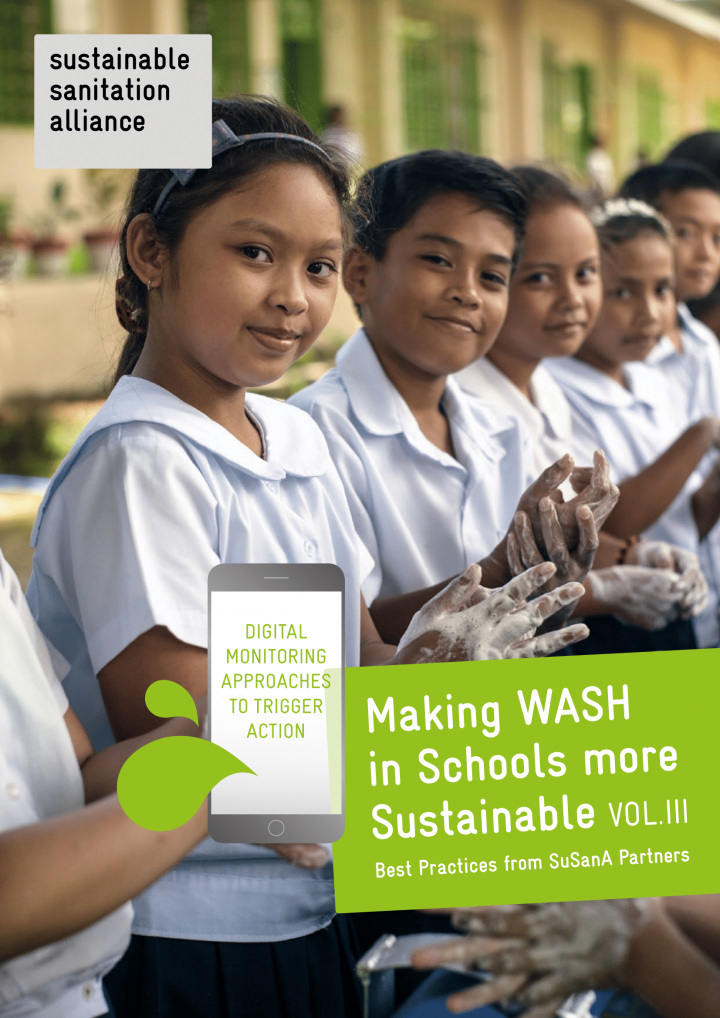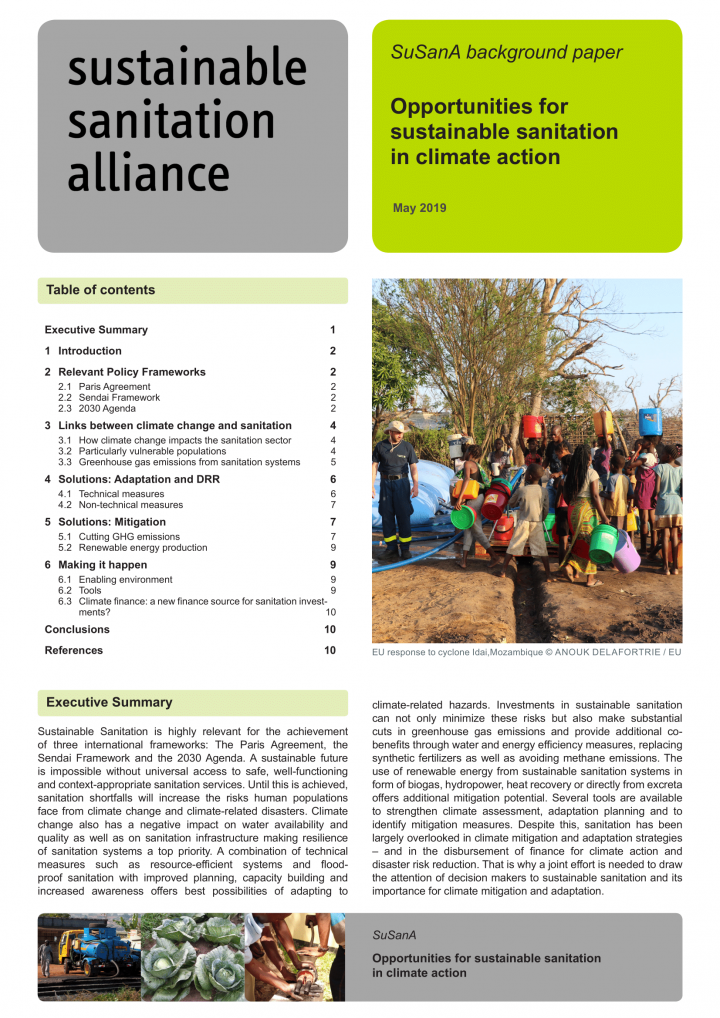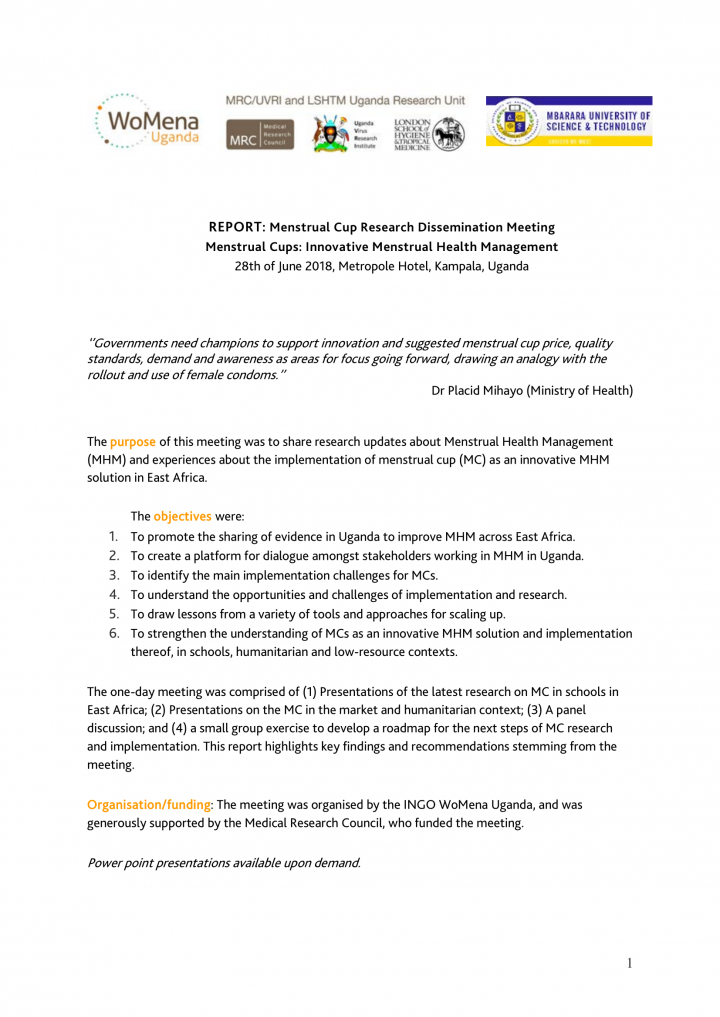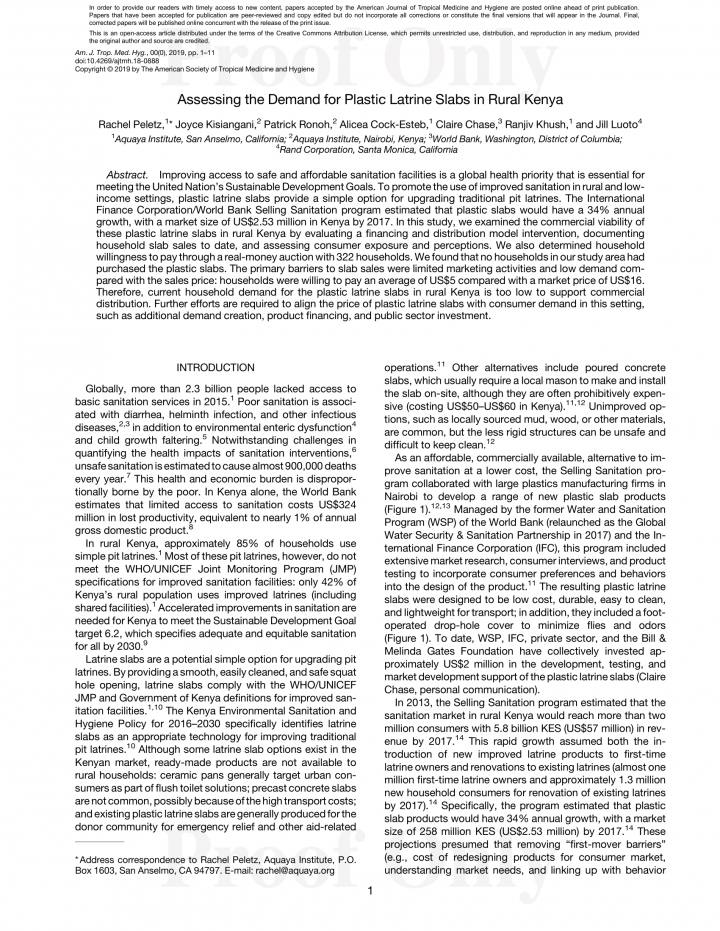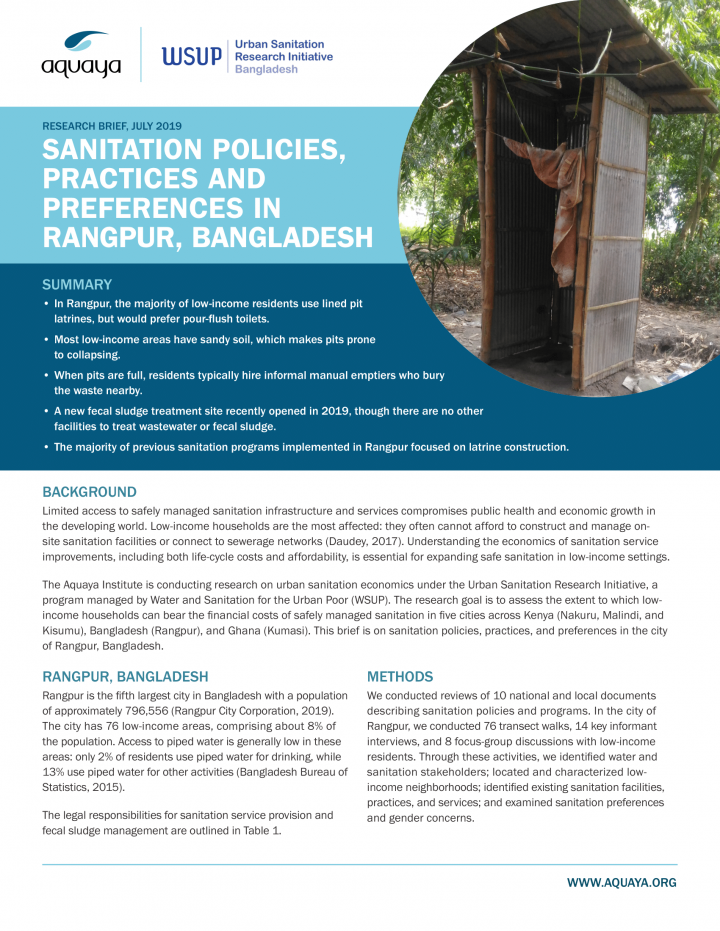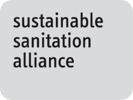Henson, B. (2019) Urban WASH in Small Towns: The 'ONEWASH Plus' Programme in Ethiopia
Water, sanitation, and hygiene (WASH) for urban populations is one of UNICEF’s emerging areas of focus highlighted in its Global WASH Strategy (2016–2030). In east and southern Africa, a number of WASH programmes have targeted small towns as a niche area in which UNICEF can build on its experience and comparative advantages at a manageable scale for the organisation. The focus of this Field Note […]
Pinfold, J. (2019) Urban WASH programming in Megacities: Supporting Low Income Communities of Dhaka, Bangladesh
Water, sanitation and hygiene (WASH) for urban populations is one of UNICEF’s emerging areas of focus, highlighted in its Global WASH Strategy (2016–2030). ‘Megacities’ have unique challenges, and often house disproportionately high numbers of women and children who are severely neglected in terms of access to WASH and other essential services. Over many years, UNICEF Bangladesh has been supporting the provision of improved WASH services […]
CPHEEO (2018) Advisory on public and community toilets
Sanitation has become a critical issue in the cities today. Ever growing population in the cities has made it difficult to provide quality service to all its citizens. Swachh Bharat Mission (SBM), the national flagship programme is dedicated to the improvement of sanitation condition in the country. Ministry is extending technical and financial assistance to ULBs for improving public sanitation facilities under SBM. The efforts have started to emerge […]
Akinsete, A., Bhagwan, J., Hicks, C., Knezovich, A., Naidoo, D., Naidoo, V., Pillay,S. (2019) The Sanitation Economy Opportunity for South Africa Sustainable Solutions for Water Security & Sanitation - A Business Perspective
The Water Research Commission and the Toilet Board Coalition have come together to identify the business opportunities in the Sanitation Economy specific to Africa. Our sanitation challenge in South Africa is a continuous one. Dealing with the inequities of the past, coupled with a dichotomy in society through apartheid spatial planning and the new perils of nature in the form of climate change puts a huge pressure on how we […]
Human Rights Council (2019) Human rights to water and sanitation in spheres of life beyond the household with an emphasis on public spaces Report of the Special Rapporteur on the human rights to safe drinking water and sanitation
Access to water and sanitation in spheres of life beyond the household, particularly in public spaces, is an essential element of the human rights to water and sanitation. However, service provision and monitoring are often neglected in such places. As a result, potential violations of human rights occur frequently and disproportionately impact persons that live in vulnerable situations, such as the homeless. In such cases, […]
World Bank (2019) Women in Water Utilities Breaking Barriers
Utilities can play an important role in reducing and eliminating barriers faced by women. This study presents a first-of-its-kind analysis that aims to heighten understanding of key barriers and bottlenecks that women face in their career in the water sector and identify interventions that water companies can put in place to increase gender diversity in the water workforce. The report draws on survey data collected […]
Chase, C., Bahuguna, A., Chen, Y., Haque, S., Schulte, M. (2019) Water and Nutrition - A Framework for Action
This framework for action was developed to support the inclusion of nutritional considerations in the design of water operations and to help formulate nutrition-enhancing water policy. Chronic undernutrition early in life can cause cognitive and physical impairments that prevent children from achieving their full potential and have lasting consequences on the human capital that is essential for economies of the future to be competitive. We present […]
Cumming, O., Arnold, B. F., Ban, R., Clasen, T., Esteves Mills, J., Freeman, M. C., Gordon, B., Guiteras, R., Howard, G., Hunter, P. R., Johnston, R. B., Pickering, A. J., Prendergast, A. J., Prüss-Ustün, A., Rosenboom, J. W., Spears, D., Sundberg, S., Wo (2019) The implications of three major new trials for the effect of water, sanitation and hygiene on childhood diarrhea and stunting a consensus statement
Background: Three large new trials of unprecedented scale and cost, which included novel factorial designs, have found no effect of basic water, sanitation and hygiene (WASH) interventions on childhood stunting, and only mixed effects on childhood diarrhea. Arriving at the inception of the United Nations’ Sustainable Development Goals, and the bold new target of safely managed water, sanitation and hygiene for all by 2030, these […]
UNICEF (2019) Water Under Fire Volume 1 - Emergencies, development and peace in fragile and conflict-affected contexts
Every child has the right to water and sanitation. And yet globally, in fragile and conflict-affected contexts, 420 million children lack basic sanitation and 210 million children lack access to safe drinking water. UNICEF launched the Water Under Fire campaign in March 2019 to draw global attention to three fundamental areas where changes are urgently needed to secure access to safe and sustainable water and […]
Andres, L. A., Thilbert, M., Cordoba, C. L., Danilenko, A. V., Joseph, G., Borja-Vega, C. (2019) Doing More with Less - Smarter Subsidies for Water Supply and Sanitation
In this report, we explore the question of how scarce public resources can be used most effectively to achieve universal delivery of WSS services. To inform our discussion, we analyze subsidies in the sector, including their magnitude, their efficacy in achieving their policy objectives, and the implications of poor design. We then provide guidance to policy makers on how subsidies can be better designed to improve their […]
UNICEF and WHO (2019) Progress on household drinking water, sanitation and hygiene 2000-2017. Special focus on inequalities.
The World Health Organization and United Nations Children’s Fund (WHO/UNICEF) Joint Monitoring Programme for Water Supply, Sanitation and Hygiene (JMP) produces internationally comparable estimates of progress on drinking water, sanitation and hygiene (WASH) and is responsible for global monitoring of the Sustainable Development Goal (SDG) targets related to WASH. The JMP has recently published global baseline reports on WASH in schools (2018) and WASH in […]
Various Authors (2019) 23rd SanCoP meeting: Municipal Capacity Building to Sustain Sanitation Services
The 23rd meeting of the UK’s Sanitation Community of Practice was held on the 14th of June 2019 at the University of Sheffield. The aim of the event was to discuss the importance and potentials of capacity building as an integral part of sanitation service delivery. Students from the University of Sheffield presented their group work assessing municipal capacity building approaches in Ghana, after […]
WSSCC (2019) Equality and Non-Discrimination - Handbook for CLTS Facilitators
The Equality and Non-discrimination (EQND) and Community-led Total Sanitation (CLTS) Handbook provides practical guidance for ensuring that behaviour change interventions leave no one behind. Drawing on experience from across the sector, this handbook is specifically targeted towards those implementing or supervising CLTS interventions at the community level. Key features include a summary of EQND principles, step-by-step guidance on applying these principles during pre-triggering, triggering meetings, […]
Action Against Hunger, WaterAid (2019) Practical pathways to integrate nutrition and water, sanitation and hygiene
Investing in the nutrition of children is crucial if countries are to nurture the human capital necessary for social and economic development. Improvements in water, sanitation and hygiene (WASH) services are critical for the success of such investments. Our research in Cambodia, Ethiopia and Madagascar reveals opportunities and pathways for combining WASH and nutrition efforts to better tackle undernutrition. This brief draws on these three […]
Monse, B., Abraham, B., Schlenk, J. (2018) Sustainable WASH in Schools (WinS) Factsheet of Working Group 7a
The aims of this factsheet are to: 1. Advocate for sustainable WinS globally as anchored in the SDGs; 2. Highlight key solutions to existing challenges within WinS; 3. Explore various innovations and successful approaches using examples from low and middle income countries and outline best practice approaches and lessons learnt; 4. Identify the common principles that are needed to achieve the desired outcomes. The following programming principles or ways […]
Schlenk, J., Pizzacalla, K., Korb, C., Monse, B. (2019) Digital Monitoring Approaches to Trigger Action Making WASH in Schools more Sustainable (Volume III)
This publication is the follow up of the first and second volume of WASH in Schools best practices by SuSanA partners. This third volume focuses on the topic of monitoring and evaluation (M&E). The aim is to show how digital approaches for M&E can be used to trigger action for improvements in WASH in Schools. It introduces the WHO/UNICEF JMP core and expanded questions and indicators […]
Andersson, K., Reckerzuegl, T., Michels, A., Rüd, S. (2019) Opportunities for sustainable sanitation in climate action - Factsheet of Working Group 3
Sustainable Sanitation is highly relevant for the achievement of three international frameworks: The Paris Agreement, the Sendai Framework and the 2030 Agenda. A sustainable future is impossible without universal access to safe, well-functioning and context-appropriate sanitation services. Until this is achieved, sanitation shortfalls will increase the risks human populations face from climate change and climate-related disasters. Climate change also has a negative impact on water […]
WoMena (2018) Menstrual Cup Research Dissemination Meeting - Menstrual Cups: Innovative Menstrual Health Management
The purpose of this meeting was to share research updates about Menstrual Health Management (MHM) and experiences about the implementation of the menstrual cup (MC) as an innovative MHM solution in East Africa. The objectives were: 1. To promote the sharing of evidence in Uganda to improve MHM across East Africa. 2. To create a platform for dialogue amongst stakeholders working in MHM in Uganda. 3. To identify the main implementation […]
Peletz, R., Kisiangani, J., Ronoh, P., Cock-Esteb, A., Chase, C., Khush, R., and Luoto, J. (2019) Assessing the Demand for Plastic Latrine Slabs in Rural Kenya
Improving access to safe and affordable sanitation facilities is a global health priority that is essential for meeting the United Nation’s Sustainable Development Goals. To promote the use of improved sanitation in rural and low-income settings, plastic latrine slabs provide a simple option for upgrading traditional pit latrines. The International Finance Corporation/World Bank Selling Sanitation program estimated that plastic slabs would have a 34% annual growth, […]
The Aquaya Institute (2019) Sanitation Policies, Practices and Preferences in Rangpur, Bangladesh
The Aquaya Institute is conducting research on urban sanitation economics under the Urban Sanitation Research Initiative. This brief is on sanitation policies, practices, and preferences in the city of Rangpur, Bangladesh. SUMMARY • In Rangpur, the majority of low-income residents use lined pit latrines, but would prefer pour-flush toilets. • Most low-income areas have sandy soil, which makes pits prone to collapsing. • When pits are full, residents typically […]
